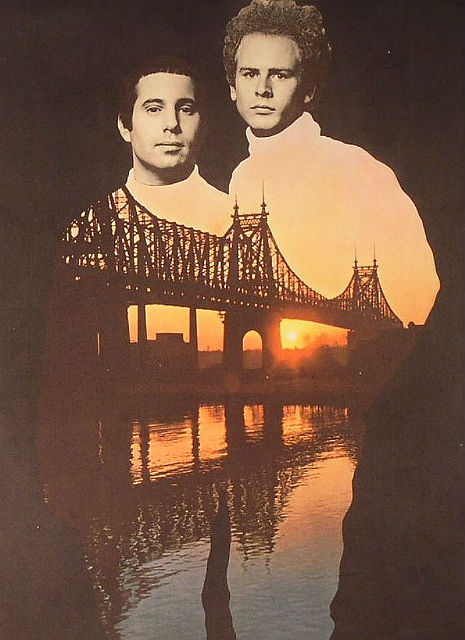


I thought: That’s the greatest record I heard in my life, especially after the scrutiny and after all the time they spent on it and breakin’ it apart musically and soundwise and all of it. I never heard the total record until I heard it on the air. Did the Dobro lick on the regular six-string finger Dobro-not a slide Dobro. One was a chord pattern and rhythm pattern. I played Tele on it and a Twelve-string, three or four guitars on it. So they left the breathin' mic on for the mix. And they wanted to take out that noise, and they took it out and said, 'Naw, we gotta leave that in.' That sounds almost like a rhythm on the record. And so, I was breathin', I guess, pretty heavy in rhythm.

And they had an ambient mic overhead, which picked up the two guitars together, I suppose. The first time we were listenin', they killed the breathing mic. So Roy Halee was a genius at getting around. They had a near mic, a distant mic, a neck mic, a mic on the hole. On my guitar, they had me miked with about seven mics. They’d get on a part, and it might be there six weeks later. Garfunkel was amblin' around the studio, hummin’, and havin’ input at various times. At the end of the day, we were still on the song. Then we started to experiment with some other ideas and so forth. And that turned into that little roll, and we cut it, just Paul and I, two guitars. Did some counter fingerpicking with him, just did a little backward roll, and lucked into a lick. I tried two or three things and then picked up the baby Martin, which was about a third above his guitar, soundwise.Īnd I turned down the first string to a D, and tuned up the bass string to a G, which made it an open-G tuning, except for the fifth string, which was standard. I think he was fingerpicking in an open C. And so all I was hearin' was bits and pieces while he was doin' his fingerpicking. I had a baby Martin, which is a 000-18, and when we started the record in New York with Roy Halee, the engineer, and Paul was playin' his Martin-I think it's a D-18 and he was tuned regular-he didn't have the song totally written lyrically, but he had most of the melody. In a 2008 edition of Fretboard Journal magazine Fred Carter Jr. The song also features a bass harmonica, played by Charlie McCoy, heard during the second and final verses. The version originally released by the duo features an instrumental melody played in unison on pedal steel guitar played by Curly Chalker and piccolo trumpet. Paul's Chapel (Columbia University) in New York City and Columbia studios in Nashville on a 16 track recorder. The recording was performed at multiple locations, including St. The original recording of the song is one of the duo's most highly produced, and took over 100 hours to record. 106 on its list of the 500 Greatest Songs of All Time. It performed well internationally, charting within the Top 10 in nine countries, peaking highest in the Netherlands, Austria, South Africa, and Canada. "The Boxer" was the follow-up to one of the duo's most successful singles, " Mrs. It is particularly known for its plaintive refrain, in which they sing 'lie-la-lie', accompanied by a heavily reverbed snare drum. The song's lyrics discuss poverty and loneliness. The lyrics are largely autobiographical and partially inspired by the Bible, and were written during a time when Simon felt he was being unfairly criticized. The song is a folk rock ballad that variously takes the form of a first-person lament as well as a third-person sketch of a boxer. Produced by the duo and Roy Halee, it was released as a standalone single on March 21, 1969, but included on the album nine months later (at the time, songs that had been released this far ahead were rarely included on the next studio album). " The Boxer" is a song written by Paul Simon and recorded by the American music duo Simon & Garfunkel from their fifth studio album, Bridge over Troubled Water (1970). The covers are reversed for some other overseas releases.įrom the album Bridge over Troubled Water Front cover of the US vinyl single displaying Art Garfunkel, while the back cover displays Paul Simon.


 0 kommentar(er)
0 kommentar(er)
